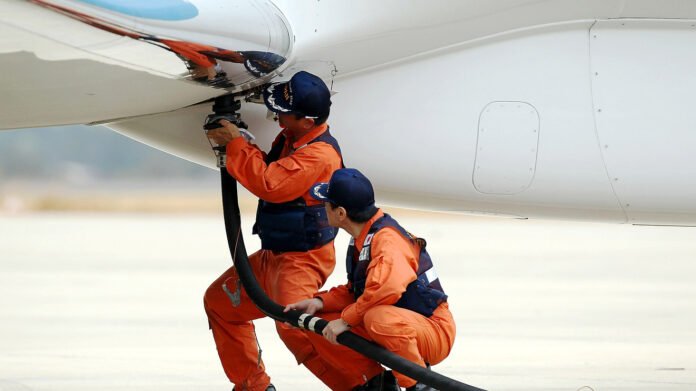When electrolysis is here, can co-electrolysis be far behind? Pretty soon, sugar factories in India could be employing co-electrolysis to produce sustainable aviation fuel (SAF). The government of India has been apprised of this possibility and is reported to be warm to it.
Now, what is co-electrolysis? Electrolysis, as we know, is the science of splitting water into hydrogen and oxygen using electricity. In co-electrolysis, you bring carbon dioxide into the equation and produce ‘syn gas’, which is nothing but a mixture of carbon monoxide and hydrogen. Syngas (or syn crude) is a basic building block for an assortment of carbon-based chemicals — including aviation fuel.
However, co-electrolysis, which needs heat, is possible only with solid oxide electrolysis cell (SOEC) technology and not others such as polymer electrolyte membrane (PEM) electrolysis.
Co-electrolysis, like electrolysis, is an age-old technology, which is now stepping out of textbooks and marching into industry.
A Pune-based company, H2e Power System, has been trying to promote SAF production through co-electrolysis. If its plans work out, a few sugar plants in Maharashtra, or an organisation like the Vasantdada Sugar Institute, Pune, could put up plants to produce SAF, for which there is a growing demand.
H2e Power has been producing solid oxide fuel cells (SOFC) for nearly a decade, a technology it developed in collaboration with the Fraunhofer Institute of Germany and holds the patents. An SOEC, which produces hydrogen from electricity, is the inverse of an SOFC, which produces electricity from hydrogen.
India has about 3.3 GW of co-generation plants and the Ministry of New and Renewable Energy estimates the co-gen potential in India’s 550-odd sugar mills at about 14 GW.
H2e Power’s Founder-President and CEO, Siddharth Mayur, told Quantum that it makes business sense for sugar plants to produce SAF. As he explained, dozens of sugar plants today produce power (and steam) from burning bagasse. These co-generation plants get ₹6-8 per kWhr under power purchase agreements, most of which are nearing expiry, making such high tariffs unviable in the future. Sugar plants can use the electricity in SOECs for co-electrolysis to produce syngas. Making SAF from syngas is no big deal — the Fischer-Tropsch process for making various hydrocarbons from syngas dates back to the 1920s, and, incidentally, was used extensively by Germany during World War II to produce fuels.
Cutting out carbon dioxide
One notable feature of the concept is that the carbon dioxide produced by burning bagasse need not enter the atmosphere — it can be used for co-electrolysis.
“Co-electrolysis of water and carbon dioxide to produce hydrogen and carbon monoxide is one of the most promising ways to convert electricity into a syngas,” says a background paper for a European Commission’s experimental co-electrolysis project. “Water plus carbon dioxide co-electrolysis constitutes the corner point of power-to-chemicals and power-to-fuel strategies, for green chemicals, carbon dioxide recovery and electricity storage at large scale,” the 2016 paper says.
Once the syngas is generated, it could be used to produce many things, such as methane. Even hydrogen could be produced by reacting the carbon monoxide in syngas with water, in what is known as ‘shift reaction’. However, H2e Power advocates using syngas to produce SAF because of the huge demand from the aviation industry and India’s need to cut imports. Mayur estimates that, globally, the commercial aviation industry drinks up annually a hundred billion gallons of fuel; if only 10 per cent of it came from sustainable sources, it would mean a huge demand of 10 billion gallons of SAF.
Mayur says SAF produced through this route will cost no more than what airlines pay for fuel at present; but when manufactured at scale, SAF would be attractively priced.
Mayur recently tweeted that he, along with Prakash Naiknavare, Managing Director of the National Federation of Co-operative Sugar Factories Ltd, met Union Power Ministe RK Singh and apprised him of the wisdom in producing SAF through co-electrolysis in sugar plants.
Naiknavare told Quantum that producing SAF would be a winning move for the sugar industry, because electricity prices from co-generation plants are falling unsustainably low. “If you don’t do this, you may have to close down the co-gen plants,” he said.
It is learnt that 4-5 pilot plants would come up soon. Once the plants are proven to be successful, “sky is the limit”, Naiknavare said.
The above news was originally posted on www.thehindubusinessline.com





